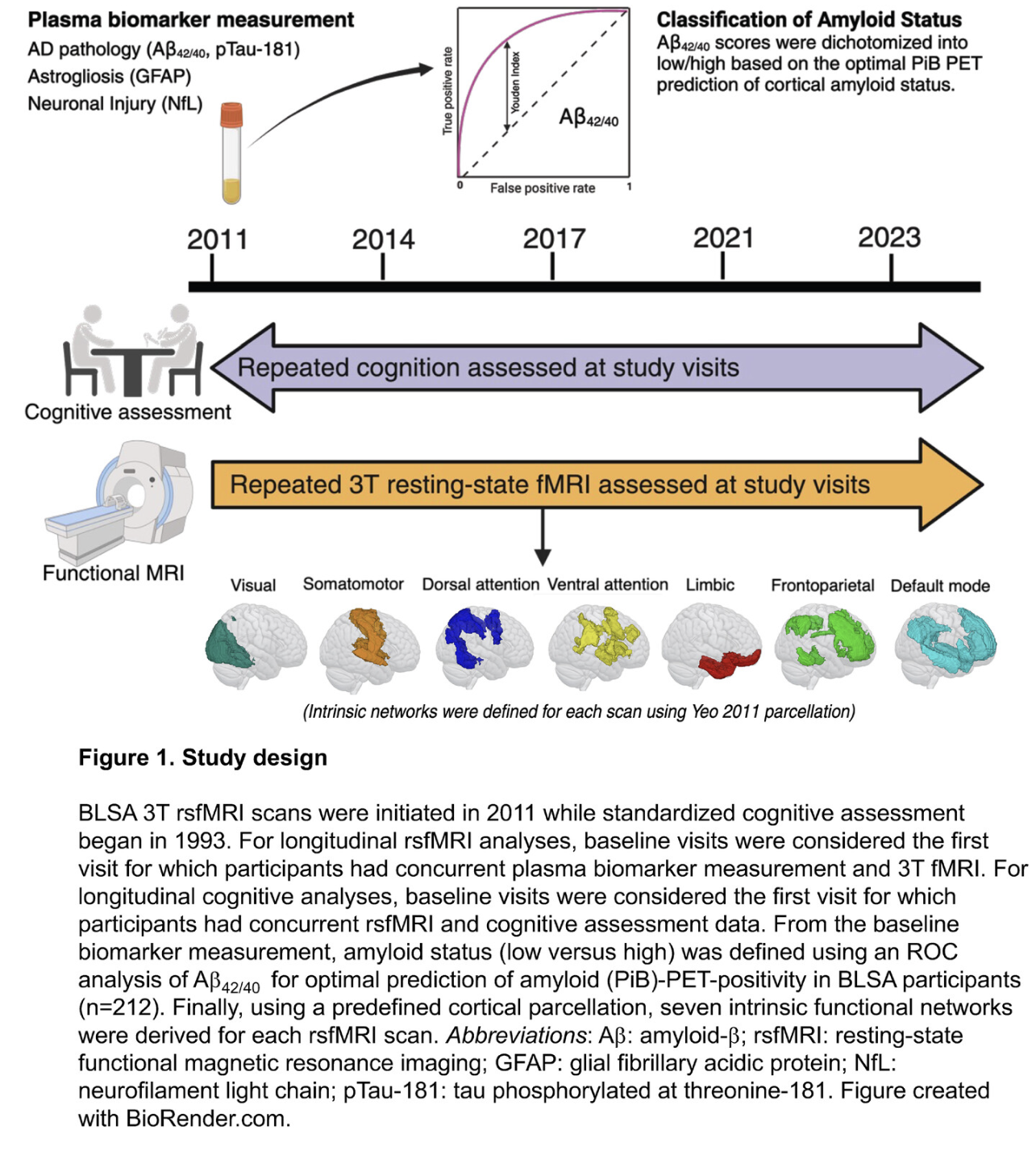Dark, Heather E.; Shafer, Andrea T.; Cordon, Jenifer; An, Yang; Lewis, Alexandria; Moghekar, Abhay; Landman, Bennett A.; Resnick, Susan M.; Walker, Keenan A. “Plasma ADRD biomarkers predict longitudinal declines in intra-network functional brain connectivity, and baseline functional connectivity predicts longitudinal cognition.” Alzheimer’s and Dementia, vol. 20, S2, 2024, e092515, https://doi.org/10.1002/alz.092515.
Alzheimer’s disease (AD) is characterized by the buildup of certain proteins in the brain and damage to brain cells, which can lead to memory and thinking problems. This study aimed to explore whether blood tests measuring these proteins could predict changes in brain network activity over time in people who do not yet show signs of cognitive decline. Researchers looked at a group of participants from the Baltimore Longitudinal Study of Aging, measuring levels of proteins related to AD (amyloid-β, tau), brain cell injury, and other factors like astrogliosis (a type of brain cell response to damage). They then compared these blood markers to brain scans to see how changes in brain connectivity were related to these biomarkers over several years.
The study followed 490 participants (average age 65) over an average of 4 years. They found that higher levels of certain proteins (Aβ42/40, GFAP, and NfL) were linked to faster changes in brain connectivity in several brain networks, particularly in people with higher amyloid levels. These changes in brain function were more pronounced in those with abnormal amyloid buildup in the brain. In contrast, no significant changes were seen in people without amyloid buildup. Additionally, the study found that brain network activity at the beginning of the study could predict later changes in cognitive abilities, such as memory and verbal skills.
In conclusion, for cognitively healthy individuals, certain blood markers can predict future changes in brain network activity, especially in those with higher amyloid levels. These changes in brain function could potentially contribute to future cognitive decline.
